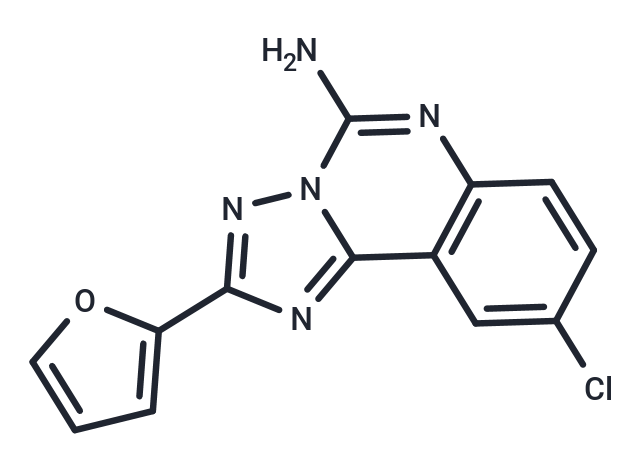Shopping Cart
- Remove All
 Your shopping cart is currently empty
Your shopping cart is currently empty

CGS 15943 is an orally bioavailable non-xanthine antagonist of the Adenosine Receptor. In transfected CHO cells, its Ki values for human A1, A2A, A2B, and A3 Adenosine Receptors are 3.5, 4.2, 16, and 50 nM, respectively.

| Pack Size | Price | Availability | Quantity |
|---|---|---|---|
| 1 mg | $39 | In Stock | |
| 5 mg | $91 | In Stock | |
| 10 mg | $133 | In Stock | |
| 25 mg | $223 | In Stock | |
| 50 mg | $333 | In Stock | |
| 100 mg | $498 | In Stock | |
| 1 mL x 10 mM (in DMSO) | $93 | In Stock |
| Description | CGS 15943 is an orally bioavailable non-xanthine antagonist of the Adenosine Receptor. In transfected CHO cells, its Ki values for human A1, A2A, A2B, and A3 Adenosine Receptors are 3.5, 4.2, 16, and 50 nM, respectively. |
| Targets&IC50 | A1 receptor:3.5 nM (ki), A2A receptor:4.2 nM (ki), p110γ:1.1 μM, A2B receptor:16 nM (ki), p110δ:8.47 μM, A3 receptor:51 nM (ki) |
| In vitro | CGS 15943 inhibits the kinase activity of the class IB PI3K isoform p110γ (IC50: 1.1 μM). CGS 15943 shows slight inhibition on p110δ (IC50: 8.47 μM). CGS 15943 (0-20 μM; 24 hours) reduces the phosphorylation of Akt at its residues Ser473 and Thr308 in HLF and Sk-Hep-1 cells. CGS 15943 (0-20 μM; 72 hours) inhibits growth of HLF and SK-Hep-1 cells, as well as HepG2 and PLC-PRF-5 cells[3]. |
| Molecular Weight | 285.69 |
| Formula | C13H8ClN5O |
| Cas No. | 104615-18-1 |
| Smiles | Nc1nc2ccc(Cl)cc2c2nc(nn12)-c1ccco1 |
| Relative Density. | 1.72 g/cm3 (Predicted) |
| Storage | Powder: -20°C for 3 years | In solvent: -80°C for 1 year | Shipping with blue ice. | |||||||||||||||||||||||||
| Solubility Information | DMSO: 12.22 mg/mL (42.77 mM), Sonication is recommended. | |||||||||||||||||||||||||
Solution Preparation Table | ||||||||||||||||||||||||||
DMSO
| ||||||||||||||||||||||||||

Copyright © 2015-2025 TargetMol Chemicals Inc. All Rights Reserved.